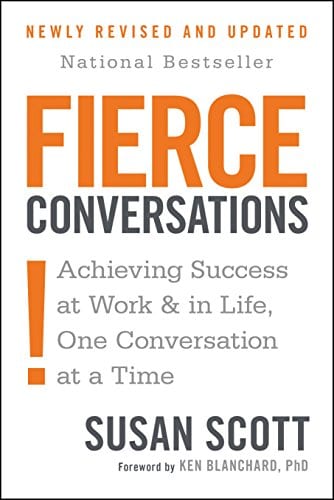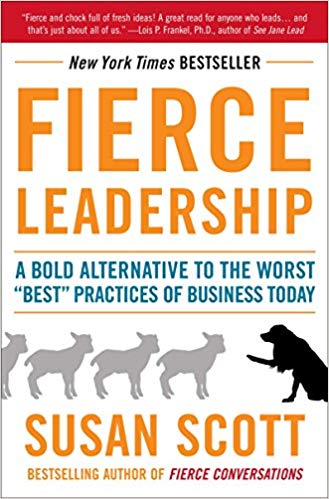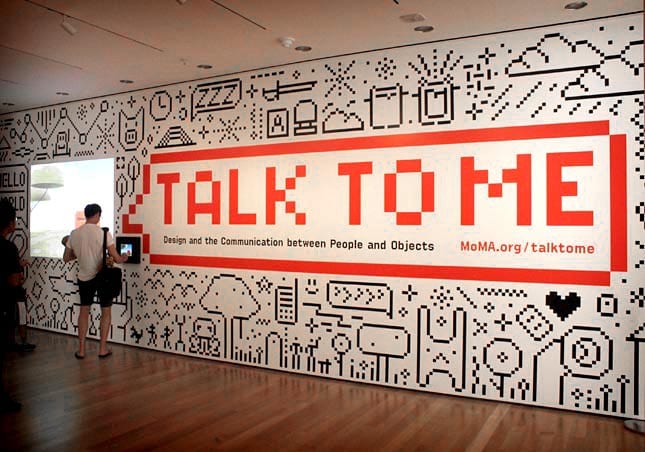
The “Sunday Scaries,” a “Case of the Tuesdays,” “Little Friday” (aka Thursday), “Blue Friday” —
in this golden era of Seattle’s incredible tech explosion, exemplified by the booming South Lake Union experience, the way we talk about our relationship with work in the high tech community is changing.
The new vocabulary is not unlike the way the Inuit Eskimos talk about snow. We have many synonyms for our work ethic that are indicative of a dynamic but often overburdened workday: bitasking, jobing, exertious, grindin’, focusitude, earning the lobster, hustle-holic, coderamming, to name but a few.

Seattle has added 220,000 jobs over the past decade, become the research and engineering hub for over thirty-five Fortune 500 companies, and has hosted more construction cranes than any other U.S. city. Not surprisingly, Seattle workers are suffering from the kind of growing pains that are symptomatic of overdoing it. The syndrome was even certified in May as an official medical condition by the World Health Organization (WHO). The agency now includes “burnout” in its International Classification of Diseases Handbook.
How are we managing? On a national level, 3.4 million workers voluntarily quit their jobs last June, with 5.5 million job separations total nationwide—the highest quit rate in over a decade. In addition, job openings were at 7.3 million, that’s one million more job openings than there are available unemployed candidates.
The robust job market in the Greater Seattle area has created a kind of bifurcation. On the one hand, it has given workers more confidence in their job outlook. On the other hand, according to a Robert Half survey, half of Seattle workers feel they are underpaid.
Asked about the top causes of their anxiety, Seattle workers said this:

- Heavy workloads or project deadlines – 29%
- Having a challenging relationship with their manager – 24%
- Not liking their job duties – 21%
- Conflicts with coworkers – 15%
And they revealed much more:
- 34% of workers in Seattle reported having the ‘Sunday Scaries’ – anxiety felt Sunday night before the start of the work week. This compared to 39% of workers nationally. Among millennials, the nationwide share was 91%!
- 46% of Seattle workers said they plan to look for a new job in the next 12 months
- In addition, 78% of Seattle employers said they are concerned with their company’s ability to retain valued employees.
- What would keep local workers from jumping ship? More money (41%), followed by more time off (22%).
Armed with the data, we consulted one of the region’s most talented HR leaders, a management analyst and communications specialist who could more clearly articulate the causes of these workplace syndromes and advise us how to best treat them.

Long before Stacey Engle became president of Seattle-based Fierce Conversations, she was already in training to be an agent of change. Her father was a Navy Admiral so she moved ten times before the age of 18. One of those moves was to Seattle when she was 7. Stacey dreamed of returning to our blue-green ecosphere, eventually applying to the University of Washington.
At the firm she now presides over with founder, CEO, and best-selling author, Susan Scott, Stacey oversees a diverse set of challenges that revolve around the art and science of workplace communication. A gallery of case studies, white papers, videos, ebooks and other resources can be found at the site’s Resource Library including creative solutions for such clients as Aveda, Coca-Cola, Costco, Verizon, Nationwide and the American Cancer Society, among others. The latest edition of Scott’s best selling, fully-revised and updated communication skills guide, Fierce Conversations, can be found at finer bookstores and online.
Fierce, Inc. is well-known for the credo that Stacey has always held to be the most significant when considering the power of conversation: “While no single conversation is guaranteed to change the trajectory of a company, a career, a relationship, or even a life – any single conversation can.” Whether you are an employee, an HR manager or a corporate officer, we hope that this conversation with Stacey might springboard a similar trajectory for you, too.
Seattle24x7: Welcome Stacey. Why are so many workers conditioned to believe that work, as a rule, is stressful?
Engle: The reality is that workers and companies are pressured more by time, convenience, and technology than ever before – in what they provide to the marketplace and also how they perform their jobs. Another contributing factor is that many of today’s workforce see their jobs as a means to an end — a way to make money to do the things they love, outside of the office. When we aren’t doing something we love or something we’re passionate about, day in and day out, it can be stressful. But it doesn’t have to be.
When we aren’t able to ask for what we want and need, a cycle begins that can be hard to get out of. We assume that work will never be fulfilling and will always be busy when in reality, it could look very different if only you have the right conversations. Ask for the raise. Volunteer to work on that specific project. Raise the issue of a difficult co-worker that is bringing you down. Let your manager know if you are feeling overworked.
Most company leaders want their employees to be happy and are willing to help them get there. These small changes can do wonders for your stress level at work, and in turn, can change your perspective immensely.

Seattle24x7: Have there been many studies on the subject?
Engle: Workplace stress has been studied quite a bit. Some stats we find compelling from various studies include the following:
Approximately 46% of employee stress is caused by excessive workloads. 52% of workers say their company does not do enough to promote employee health, including mental health. 82% of respondents said making a workplace error causes stress. When asked what the top three reasons why people do not like their jobs, 62% of responses were communication related.
This all points to the idea that workplace stress can be mitigated through effective communication — whether that’s encouraging employees asking for help when their workload is consistently too high, company leadership spending more time and resources promoting employee health or working to shift a culture to one where mistakes are seen as learning opportunities.
Seattle24x7: Are the root causes of employee stress on the job related to the specific challenges and workload they are tasked with? With company culture? Both of those, and/or something else?
Engle: Stress is a very personal emotion — something that may stress one person out, say, being behind on a project, someone else will take in stride. The level of challenge, chaos, unknown, etc. that someone can handle is based on that individual. With that said, in a culture where stress is the norm across all employees, something is very wrong.
The good news is that this means many can be solved by having the right conversations.
Seattle24x7: How do you interpret the findings of the Robert Half survey that found 46% of Seattle workers are money-motivated to look for another job?

Engle: There is no doubt that younger generations feel more comfortable being open about salaries, and thus share these details more readily, both within their organization, and with friends in the industry working elsewhere. With web sites focused on compiling real data on what they may be worth, it’s easier than ever to get a sense of what one should be paid. Employees can and should use this to their advantage.
With that said, if there are constant whispers about salary that result in unhappy employees, that is a larger issue. Every organization wants their people to feel compensated fairly — if they don’t feel this way, there are a whole host of larger issues that arise in their performance. If people in the same role are being paid wildly differently, that’s also an issue. The increased transparency can help organizations take a hard look at their salary framework, and potentially make salaries more fair across the board. This can play a big role in the gender pay-gap, and potentially make an organization a more desired workplace.
The bottom line is, however, that open and honest communication between employees and managers is key. I think it’s great that employees feel empowered to ask to be paid what they believe they are worth. That isn’t to say they will always get what they want, but it opens up a conversation that is healthy, and that ultimately will be good for everyone.
Seattle24x7: On the other side of employee assertiveness, there are many employees that suppress criticism of their work environment out of fear of disrupting their role at a company? You have conducted research on this “Culture of Niceness”?

Engle: Yes, earlier this year we surveyed more than 1,000 full-time employees across the U.S. and found that nearly 63 percent have chosen not to share a concern or negative feedback at work. The reasons cited for keeping these things to themselves included fear of seeming combative, being viewed as uncooperative and worrying that others would view them negatively. The survey also found that 80% of employees think it is important to be considered nice by those they work with.
These results strongly point to an epidemic — if not an obsession — employees hold when it comes to being viewed as nice. Unfortunately, when employees suffer from this preoccupation, business problems are swept under the rug, and difficult bosses and managers are ignored and never improve, resulting in employees going uncoached. This causes talent to decline, relationships to suffer, productivity to plummet, trust to erode, and the bottom line to dwindle.
Seattle24x7: How can employees provide constructive critique within an organization without seeming combative? Should companies set up a protocol for sharing concerns or negative feedback at the office? How so?
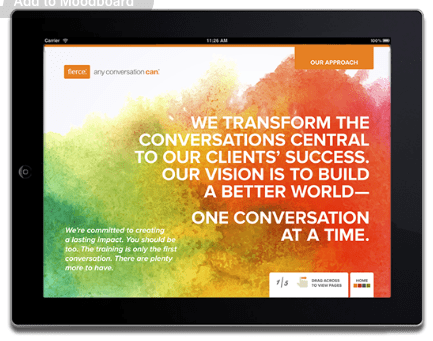
Engle: Feedback and Confrontation conversations aren’t easy, but in most cases, employees feel better after having them and relieved after all the time spent stressing out about them or avoiding them for as long as possible. We have some general tips, but being trained in conversation skills is a huge benefit when it comes to confronting someone.
Here are some concrete tips for those struggling to have these conversations:
Name the issue. If you’re planning a confrontation, get clear about the issue. Be specific. What happened? When and where did it happen? How did you feel? Why is it an issue? If there were multiple incidents, try to think of at least one specific example so the other person has a clear idea of what the confrontation is about. Keep in mind that you’re confronting an issue, not a person. Sometimes when we feel emotions like anger or disappointment, we can make the mistake of labeling the person as the issue. If you enter the conversation this way, I can promise you the result will be less than peachy.
Change your context. When we think of confrontation, we often picture ourselves in an adversarial position: Fingers pointed, squared off on opposite sides of the table, smoke coming out of our ears. But the reality is that we want to be with someone in front of an issue. We want to be open to hearing their side of the story. Picturing yourself side-by-side with someone as you examine an issue together calms the nerves and positions you both to work towards a solution. This shift in context is not only powerful in bettering your approach to this conversation, but the confrontations you have will also be more successful as a result.
Write an opening statement. With confrontation, preparation is key. When the person you are confronting realizes what is happening, they will (naturally) turn inside, briefly panic, or momentarily leave their body as they’re lost in thought. Therefore, your thoughtfulness in the words and tone you choose, the examples you use, and your clarity about the situation is paramount. This is not the time to “wing it.” Start by naming the issue. From there, state your intention to resolve the issue.
Practice, practice, practice. Once you have a solid opening statement, practice delivering it to another person who’s not involved in the issue—a person you trust and who has your best interests in mind. Reading it to yourself versus saying it aloud are two wildly different animals. You may be surprised at how much emotion leaks into your voice (and your face!) when you share your statement verbally. Saying it a few times aloud will help you work through those emotions so that you can deliver your message clearly and without a big emotional load. When an organization has trained their employees in these skills, their protocol is simple: if there is an issue, address it head-on, and If it needs to be brought to a manager, do so. To start the process, Fierce recommends organizations take the following steps:
Invest in programs that teach how to give and ask for feedback. Don’t wait for employees to bring up issues or concerns. Instead, make regular requests for feedback and provide feedback directly yourself — including to upper management.
Teach teams how to confront the behavior. Don’t ignore issues you are aware are happening. Address them directly clearly and concisely. Work toward solutions.
Promote a collaborative environment and turn meetings into think tanks. Actively invite multiple perspectives during team meetings, to ensure all voices are heard and that new ideas are generated.
Seattle24x7: How should a company confront a “toxic” employee who may be creating friction and dissent in the work environment? Should a toxic employee be confronted by colleagues to get to the root of the problem? What is the best course of action?
Engle: When there is a toxic coworker in the mix, it can make everyone’s jobs miserable — and this has real consequences for organizations. Generally, there are two issues at play. First is the root cause of the toxic employee’s unhappiness, and thus their toxic nature. Second, how your employees react to that toxic employee. It is important that employees feel empowered to address the toxic co-worker in real-time. The more it festers, the worse things will get.
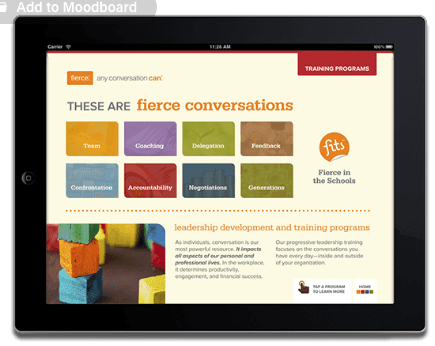
For company leaders, there are some key tips to take into consideration:
Take employee concerns seriously. Don’t dismiss or disregard issues that are brought to your attention, even if they seem petty at first glance. Instead of sweeping concerns under the rug, address them head-on. We find in organizations that when people report issues, they are often occurring weeks or sometimes months before they are openly discussed. It can take a lot for an employee to have the courage to say something, so be respectful of that and do what you can to help incite change.
Have a plan in place. Once toxic employees are confronted, have a growth plan in place to hold yourself and them accountable for their improvement. Ultimately, some negative attitudes can have root causes that can be solved and worked through. Others, not so much. A plan needs to be in place whether it is a growth plan for the employee who wants to improve or an exit plan for those employees who insist on continuing their toxic behavior.
Assure all employees are equipped to handle confrontation conversations. Confrontation conversations can be challenging, and it’s important to develop the skills necessary to have them successfully. When your employees are able to address issues on their own, they are less likely to become a larger issue that you have to deal with. Open and honest conversations throughout every level of your organization are the goal.

Seattle24x7: More than 50 percent of U.S. employees leave vacation days on the table at the end of the year (according to the U.S. Travel Association). Why?
Engle: I have no idea — those people are nuts! Just kidding… sort of. People who don’t take their vacation days either really love their jobs, or are fearful – either that things will fall apart while they are gone, or that they won’t. In the study you reference, the top reasons cited were fear of looking replaceable, too heavy of a workload and a lack of coverage at work while away. To company leaders, this should be alarming — your employees aren’t taking their much needed (and we’d say deserved) time off, due directly to their belief that their jobs will suffer.
Seattle24x7: What is the preferred amount of time off and are most employees taking it? If not, why not?
Engle: A survey we conducted a few years back found that the majority of employees say the ideal number of PTO days would be 20 or more days. Just 15% of respondents would like to take unlimited vacation each year. But as you point out, many employees aren’t taking days allotted to them as is.
If an organization sees that their employees are leaving vacation days on the table, across the board, they must recognize this as an issue, and try to get to the root of the problem.

Seattle24x7: How can employers and other team members help hard-working employees to relax?
First, I think it’s important to point out that when it comes to relaxing, it is really more on the employee themselves, not those around them, to ensure they are able to fully embrace their vacation.
With that said, there are things company leaders can do to ensure their employees are taking the vacation they need, and getting the full benefits time-off provides. Here are some questions we recommend managers ask their employees, to help start a productive dialogue:
What is your preferred amount of time off and are you taking it? This is a great starting question to have with each of your team members. Get curious about their sentiments and assure there is clarity around company expectations. This sets a foundation for future conversations about paid time off. Learn about your team members’ desires and how they can truly hit their own goals around work/life blending. Some employees will not want to take as much and others will want to take more. Gain clarity around what taking time off means to each of your team members, and do what you can to meet these needs. This doesn’t mean giving in to a month-long sabbatical every year, but instead, ensuring your employees feel heard and supported in their time off within the company’s set parameters.
How can I, and the rest of the team, support you better when you do take time off so you can relax? When you ask this question, make sure to cover both areas of the question: how you can support them, and how the larger team can do the same. These answers may be different. And sometimes, to get the conversation started, it can be helpful to ask how the team works first. Then, really dive into what works and doesn’t work. You can pan this question out to a larger support question because if there are issues with how PTO is handled, there are likely other areas where your team member could feel more supported. Perhaps it is a mindset shift or perhaps you will uncover needed resources or attitudes to better support the person. This is where concerns about taking time off will come up — and you can hopefully work towards addressing them quickly and across the board.
How can we set up your vacation time for success? This is a more actionable conversation. Ensure that your employees have the appropriate dialogue with you and other team members well before leaving. Having a plan in place will not only help those left on the ground, but will make it easier for your employees to actually relax, as they will feel as though they are set up for success. Set clear expectations — both on their end and for the team. Some people may want to check in daily or continue to own a task while away, whereas others may want to disconnect completely. It’s important to remember that it doesn’t need to be one size fits all.
Seattle24x7: What do employees really want? Is it happy hours and pool tables or something deeper?
Engle: This is going to vary by organization, from team to team. The best thing leaders can do is avoid making assumptions about what employees want. While happy hours and an office pool table may be great additions, these types of perks only scratch the surface of what are much less superficial needs. Surveys reveal that today’s workforce craves a sense of purpose and meaning, development opportunities, and work-life balance. The best cultures take employee needs and desires, both physical and emotional, into account—leadership expresses appreciation, provides ongoing feedback, grants autonomy, and listens with curiosity. Support the need for personal and professional growth by providing learning opportunities.
Seattle24x7: What is “white space” and how can employers make it a part of their corporate culture?
Engle: Creating “white space” is committing to taking intentional pauses for thoughtful reflection or nothing at all. What exactly this looks like can vary — it may mean taking a walk around the block (no podcasts allowed!), taking a power nap, breathing exercises, or doodling in a notebook. To make white space a part of your organization’s culture, you must communicate its value and encourage employees to implement it into their workday. Whether we’re in a technical or creative role, we need this creative breathing room. Research shows that although epiphanies seem to come out of nowhere, they often happen as the result of downtime, or “white space.” If you want to decrease stress and increase innovation and creativity in your organization, white space is the way to do it.
Seattle24x7: Fierce Conversations places a lot emphasis on a “Whole Person” approach, taking into account the individual’s vision for themselves in all areas of life while providing the supportive resources they need to help make that vision a reality. What are some of the steps involved in making that holistic practice a part of an organization’s culture? Personal development funds? Flextime? Learning opportunities? Conversation?
Engle: We do. This method is rooted in approaching employees holistically — taking into account the individual’s vision for themselves in all areas of life while providing the supportive resources they need to help make that vision a reality. Some ways an organization can embrace this approach include the following:
Offer personal development funds. Personal development funds allow employees to spend an allotted amount of money on any type of activity they choose—this could include anything from a music class to a pottery class or even a gym membership. At Fierce, every employee is given an annual personal development fund to use for any activity we feel will help us grow in the ways we want to. This incentive speaks volumes about Fierce culture and is a walk-the-talk way of promoting growth. If this kind of offer just isn’t possible within the current confines of your company’s budget, communicate the message anyway through conversation—let them know you want the best for them, and that you support where they’re headed, no matter where that might be.
Allow flex time if possible. If an employee is taking on-campus courses or pursuing an interest that falls within normal work hours, consider offering flex time. Flex time requires employees to work the same number of hours and during days and times that function with their pursuits outside of work. Accountability is needed here — give trust and hold your employees “able.” Level set and discuss how they can fulfill the responsibilities of their role and pursue other goals and interests in life at the same time. Either/or thinking is often the default for many, yet it’s important for leaders to look for opportunities for “and” thinking. Ask: What is wanted here by all parties involved, and is there a way we can all say yes? Think in terms of possibility.
Provide learning opportunities. Offer opportunities to educate employees on the latest advancements in training, technology, and industry. In addition to offering leadership development and training, stay up-to-date on unique opportunities such as local learning events and online courses. Offer to cover entry or sign-up fees if possible. Most importantly, offer human-to-human support. A mentorship program, for example, can be a welcome addition at any organization.
Offer participant-driven learning. Support autonomy and personal development by giving employees choices when it comes to what they’re learning and how they’re learning. While many instances of learning and training are top-down initiatives, it’s important to take different learning preferences into consideration—provide options that allow employees to work at their own pace and support them in retaining and practicing what they’ve learned after they’ve learned it.
Ask! Have a conversation with employees individually. Ask them how they are wanting to develop, either at work or at home, and what would help them feel more supported. Ask directly, how can I support you? Depending on the answer they give you (and they may need some time to think about it), create some action items, if applicable.
Seattle24x7: Could you explain the five essential questions every employer should ask of each employee, and share the purpose of each?
Engle: You bet. We know that leaders spend a lot of time working and interacting with their employees – team meetings, 1:1 meetings, email exchanges…the list goes on. But how much time do they spend actually communicating with them, in a meaningful way? Not enough, in our experience. With this in mind, there are 5 questions we believe every employer should ask their employees. These include the following:
What difference do you want to make here? Sure, there are times when a job is only a means to pay the bills, but all of us benefit from roles where we believe we can make a true impact. The act of asking it alone recognizes that a leader does, in fact, believe the employee can make a difference. It gives the employee the opportunity to think, perhaps for the first time, about the answer. This can help build a greater connection to their individual purpose and to the purpose of the organization, and ideally drive them toward greater success within their current role, and beyond.
How do you like to be recognized/rewarded? In work and in life, we all make assumptions based on our beliefs. If you feel great when your boss gives you kudos publically, you may assume others want the same. The truth is, sometimes individuals would rather a personal, in-person recognition vs. something more public. And while a bonus is always nice, perhaps some on your team would prefer a few extra days off instead. Understanding what motivates your employees on a personal level will ensure you can use these forms of reward to continue to get the results you want.
What is something that you feel is holding you back? This is a loaded question, but one that is worth asking. It quickly gets to the heart of any issues in a way that opens up the conversation to a number of possible barriers to success. These barriers could include a process, an employee feeling overwhelmed with their workload, or even issues with their team members or team leader. Your job is to take these answers and try to smooth the way for that employee to be even more productive and self-aware. It is critical for you to be able to ask many probing questions, even focusing on “What else? What else? What else?”
What would you like to be doing 2 months from now? A popular interview question is where do you want to see yourself in 5 years, but by crunching that down, you can get some insightful answers. Two months isn’t long, but it is enough time to set short-term, attainable goals. These answers can help focus an employee – whether it be greater work/life balance or finishing a project that has been on the back burner. This question helps the employer get a sense of where the employee wants to be, and gets the employee thinking about the future.
Do you feel you have successful work/life blending? This question is different than simply asking if your employee has a good work/life balance, and the subtle wording is key. Work/life balance is different for everyone, and issues come when there is a disconnect between what someone needs and what they are getting. Blending is a different way to look at it. This question opens up the ideas around how you can support them specifically, including where you, or other team members, may be overstepping. The key here is to ensure that they feel supported in what they have created, or possibly, need to create. It will solicit greater feedback and the action items needed to improve your relationship and their commitment to the organization as a whole.

Seattle24x7: A survey commissioned by Robert Half found that 46% of Seattle employees were considering changing jobs in the next 12 months. More money topped the list of what these employees are looking for? Is compensation the real driver in changing jobs or does it mask other issues? Is the grass always greener at the “next” employer?
Engle: This is interesting. While yes, money is important, most organizations are willing to negotiate salary to one that is competitive, especially if it means potentially losing a great employee. If you are a valued employee, there is likely room to negotiate what you make, especially if you have offers elsewhere. If people are looking to move, in most cases it likely isn’t a simple as making more money.
There are so many benefits that go beyond money that employees value — and this can vary from generation to generation, industry by industry. Flexible schedules, remote work, colleagues they like working with, the location of the office… all of these things factor in greatly when it comes to one’s overall job satisfaction. Sure, salary is a key part, but for those looking to move based solely on salary likely aren’t looking at the big picture.
Seattle24x7: Can you give us an example of where Fierce Conversations helped a client identify a breakdown or problem in their communication and facilitated a solution?
Engle: Christus is a healthcare system comprised of over 230 hospitals and clinics and employs over 45,000 associates. Their organization had fallen into the trap many organizations face. They had developed a culture of “being nice.” Associates had mistaken their value of compassion with avoiding difficult conversations.

Many leaders avoided giving conversations around feedback, and because of this, many associates were confused as to why they weren’t being developed. Nobody was sharing their insights or opinions. After hiring a 3rd party consultancy to determine where their breakdown was, it was determined that conversations were key to solving the issues they were facing. Fierce was brought in at their leadership level which allowed Christus to approach problem-solving proactively. They created an environment using a common language where Fierce tools were easily applicable. This allowed them to get upstream of potential issues and leverage the strengths of new leaders.
Christus was able to achieve a 50% reduction in executive turnover. A 36% internal promotion increase and an increase in employee retention of 80%. They also received the North Texas Prism Award for Internal Training and Leadership Programs. [24×7]
Visit Fierce Inc at http://fierceinc.com












